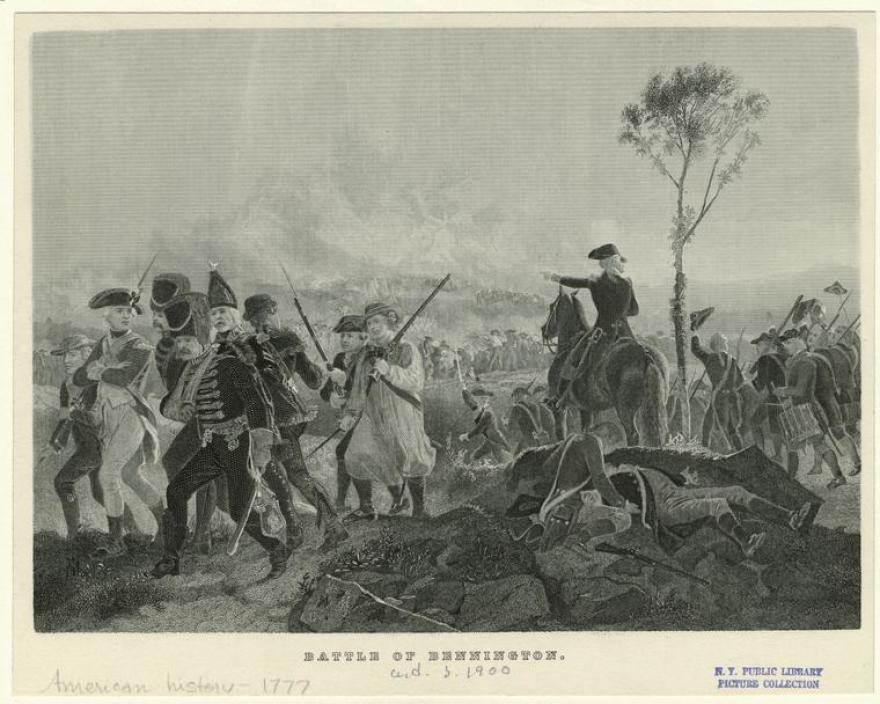
An engraving after a painting by Alonzo Chappel depicts the Battle of Bennington on Aug. 16, 1777. Image courtesy of the New York Public Library Picture Collection.
The American Revolutionary War was the foundation of the American Republic. This War was fought between the King's forces of Great Britain and the Colonial Revolutionaries between the years 1775-1783. The Second Continental Congress declared independence in 1776.
There were many supposed and/or real reasons for the War, depending on the historian you read. Considered two of the main reasons were that the King of England began to tighten his controls on and require more tariffs in the form of the American Revenue Act, also known as the Sugar Tax, followed by the hated Stamp Act, nothing more than an additional tax levied against the Colonies on all printed materials. With these taxes the Colonies, for the first time, were to pay taxes directly to Britain and not their local legislatures.
Other reasons included the Boston Massacre, where five Colonists were killed and many more wounded, and the Boston Tea Party, which is a well known show of resistance by the Colonists. Also, the formation of the Sons of Liberty, a secret organization created to fight the Stamp Act.
Vermont had declared its own independence in 1777 and, in effect, was an independent nation until it's entry into the United States in 1791. Even though not, in reality, a part of the United States, Vermonters played a large part in and supported the Colonists in the Revolutionary War with its most notable character, Ethan Allen, at the forefront.
Allen led a contingent of the "Green Mountain Boys" into many battles both close to home and throughout many states to our south. These original "citizen soldiers," along with Benedict Arnold, were best known for the capture of Fort Ticonderoga early in the War. The capture of this strategic fortress impeded the advance of the British along the waterways of Lake Champlain from Canada. After the capture of Fort Ticonderoga some of the cannons from that garrison were moved to the Boston area to aid General Washington in his campaign there.
Another important battle for Vermont was the Battle of Bennington. Roughly 2,000 Soldiers, including militiamen from Vermont, New Hampshire, and Massachusetts, defeated a British force of 700. The end of the day-long battle saw 200 Loyalists dead and 700 captured, with 30 militiamen dead and 40 wounded. This decisive defeat for the British at Bennington led to Lord General John Burgoyne's defeat at the Battle of Saratoga and helped encourage the French to support American independence.
We have been able to collect a good selection of articles and memorabilia that we are showing at our museum.